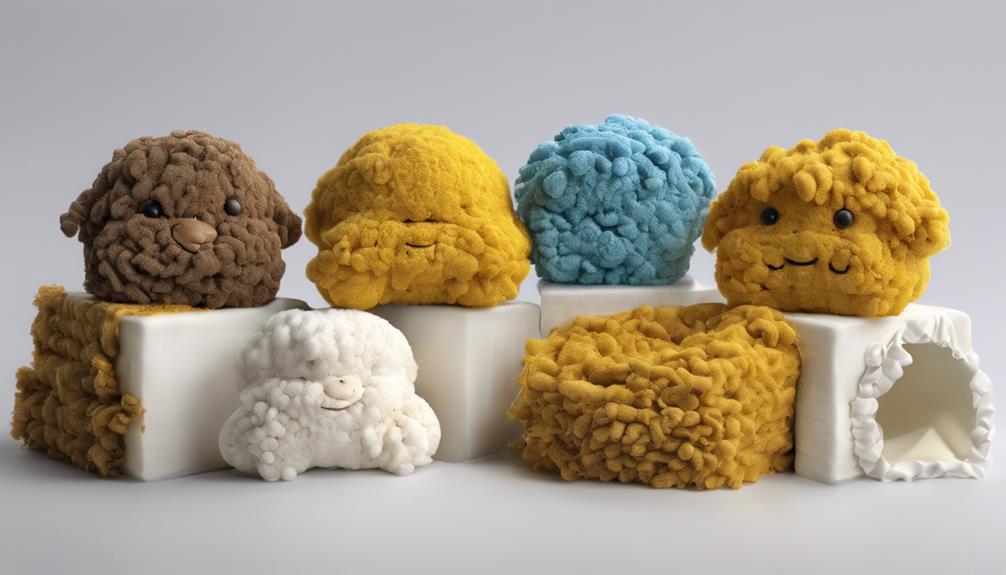As parents, guiding through a newborn's poop shift can feel like deciphering a cryptic message. Understanding the ever-changing colors and textures can be a puzzling yet important task in monitoring your baby's well-being.
But fear not, as this guide equips you with the necessary tools to decode these poop mysteries and guarantee your little one is on the right track. Let's unravel the secrets behind your baby's bowel movements to ease your worries and provide the best care possible.
Key Takeaways
- Meconium passage signifies healthy bowel function and digestive system readiness.
- Monitoring poop color, consistency, and smell aids in early detection of health issues.
- Variations in poop color and texture are normal during feeding transitions.
- Prompt medical advice is crucial for concerning poop changes to ensure baby's well-being.
Meconium: Your Baby's First Poop
Upon entering the world, newborns are met with their very first stool known as meconium, a dark green or black substance that signifies the healthy functioning of their digestive system. Meconium is a unique stool for newborns, as it isn't like the typical fecal matter we associate with bowel movements.
This sticky and tar-like substance is a result of the accumulation of mucus, amniotic fluid, and skin cells in the baby's gastrointestinal tract during development in the womb. Its dark color is due to the presence of bile pigments that have been processed in the baby's liver.
Passing meconium within the first day after birth is essential, as it shows that the baby's digestive system is working correctly. Healthcare providers pay close attention to the passage of meconium as it indicates the proper functioning of the baby's gastrointestinal tract, setting the stage for future healthy bowel movements as the baby shifts to more typical stool patterns.
Understanding Normal Poop Patterns
Understanding the normal poop patterns of newborns is important for us to monitor our baby's digestive health in the early stages of life. Here are some key points to contemplate:
- Meconium Passage: Newborns typically pass meconium, a sticky, dark greenish tar-like stool, within the first 24 hours of birth, indicating the clearing of their bowels from substances ingested in the womb.
- Breastfed vs. Formula-fed: Breastfed babies often have liquid, mustard yellow stools due to the composition of breast milk, while formula-fed babies tend to have softer, well-formed stools of varying colors based on the formula used.
- Color and Consistency: Monitoring the shift of newborn poop colors and consistency is vital. From the initial meconium to the lighter greenish-brown stools after a few days, observing these changes can provide insights into the baby's digestive health and guarantee they're receiving proper nutrition.
Signs of Healthy Poop
Monitoring newborn poop is important for parents as it provides valuable insights into their baby's digestive health and overall well-being. When it comes to evaluating healthy poop in babies, there are key indicators to look out for. For breastfed infants, the ideal color is mustard yellow, while formula-fed babies typically have tan to brown stools. The consistency of healthy poop should be soft, resembling a seedy or watery texture. A slightly sweet smell is normal, reflecting the digestion of breast milk or formula.
Recognizing these signs of healthy poop is vital as they signify proper digestion and absorption of essential nutrients. Changes in color, consistency, or frequency can serve as early warning signs of potential health issues. By staying attuned to these characteristics, parents can effectively monitor their baby's digestive system and overall well-being. Remember, a healthy poop is a positive indication of your baby's thriving digestion.
Dealing With Poop Changes

As we observe our baby's poop evolving, it's important to be prepared for the changes in color, consistency, and odor that may occur. Here are some essential points to take into account:
- Monitoring Shift: During the change from the first stool (meconium) to regular stool colors, it's normal to see variations in color due to dietary changes and gut development. Be attentive to these shifts as they indicate your baby's digestive system maturing.
- Adapting to Adjustments: Expect fluctuations in poop consistency and frequency as your baby moves from breast milk or formula feeding to solid foods. The texture and odor of the stool may change accordingly, becoming firmer or looser.
- Seeking Guidance: If you notice unusual colors like red, black, or white in your newborn's stool or experience persistent constipation or diarrhea, consult your pediatrician promptly. They can offer valuable advice on managing these poop changes and ensuring your baby's digestive health.
Seeking Medical Advice
In cases where concerning changes in your newborn's stool color, consistency, or frequency arise, seeking prompt medical advice is important to safeguard their health and well-being. As parents, we must be vigilant and attentive to any signs that may indicate underlying issues.
If your baby experiences constipation with hard or dry stools, contacting a healthcare provider is essential to address the issue promptly. Additionally, red, black, or bloody stools could point to gastrointestinal problems that require immediate medical attention. Fussiness, vomiting, or the absence of bowel movements for four days are red flags that should prompt a call to the pediatrician.
Besides, white or clay-colored stools might signify liver or gallbladder problems, warranting evaluation by a doctor. Remember, any unusual or worrying changes in your baby's bowel movements shouldn't be ignored, and seeking medical advice promptly can help in diagnosing and treating any potential concerns effectively. Your baby's health is paramount, and timely intervention is key to ensuring their well-being.
Frequently Asked Questions
What Is the 7 Second Poop Trick?
We lift baby's legs for 7 seconds to help bowel movements. This gentle trick mimics a natural squat position, aiding in poop passage. It's non-invasive, simple, and can relieve constipation naturally without medication.
What Simple Trick Empties Your Bowels Immediately?
When it comes to emptying our bowels immediately, we've found that a combination of warm lemon water, high-fiber foods, and gentle physical activity works wonders. These simple tricks can help get things moving smoothly.
What Are the Transitions for Newborns Poop?
In the early days, newborn poop changes from meconium to a greenish-brown hue, indicating the shift to regular stools. Breastfed babies often have mustard yellow, liquid stools during this process, while formula-fed infants experience alterations in color and texture.
How Long Does Transitional Poop Last?
Poop usually lasts from the third to sixth day after birth, symbolizing the shift from meconium to regular stool. It appears greenish-brown, less sticky and softer than poop. Parents should anticipate regular stool patterns post poop.
Conclusion
Just as a caterpillar goes through stages of change before emerging as a beautiful butterfly, your baby's poop shift is a natural process of growth and development.
By closely monitoring their bowel movements, understanding what's normal, and seeking medical advice when needed, you're guiding them through this journey with care and diligence.
Trust in your instincts and the guidance provided in this how-to guide to guarantee a smooth shift for your little one.









